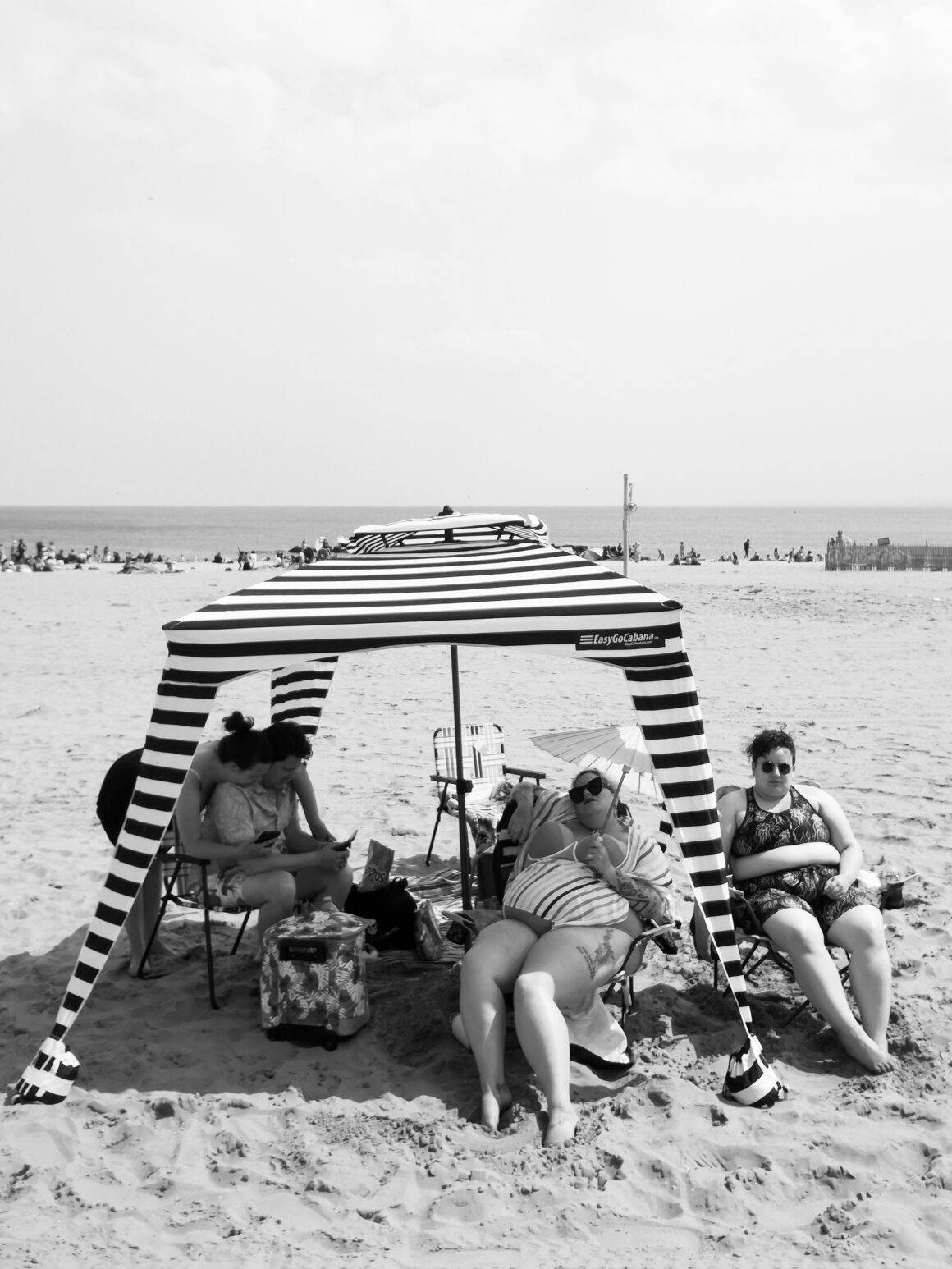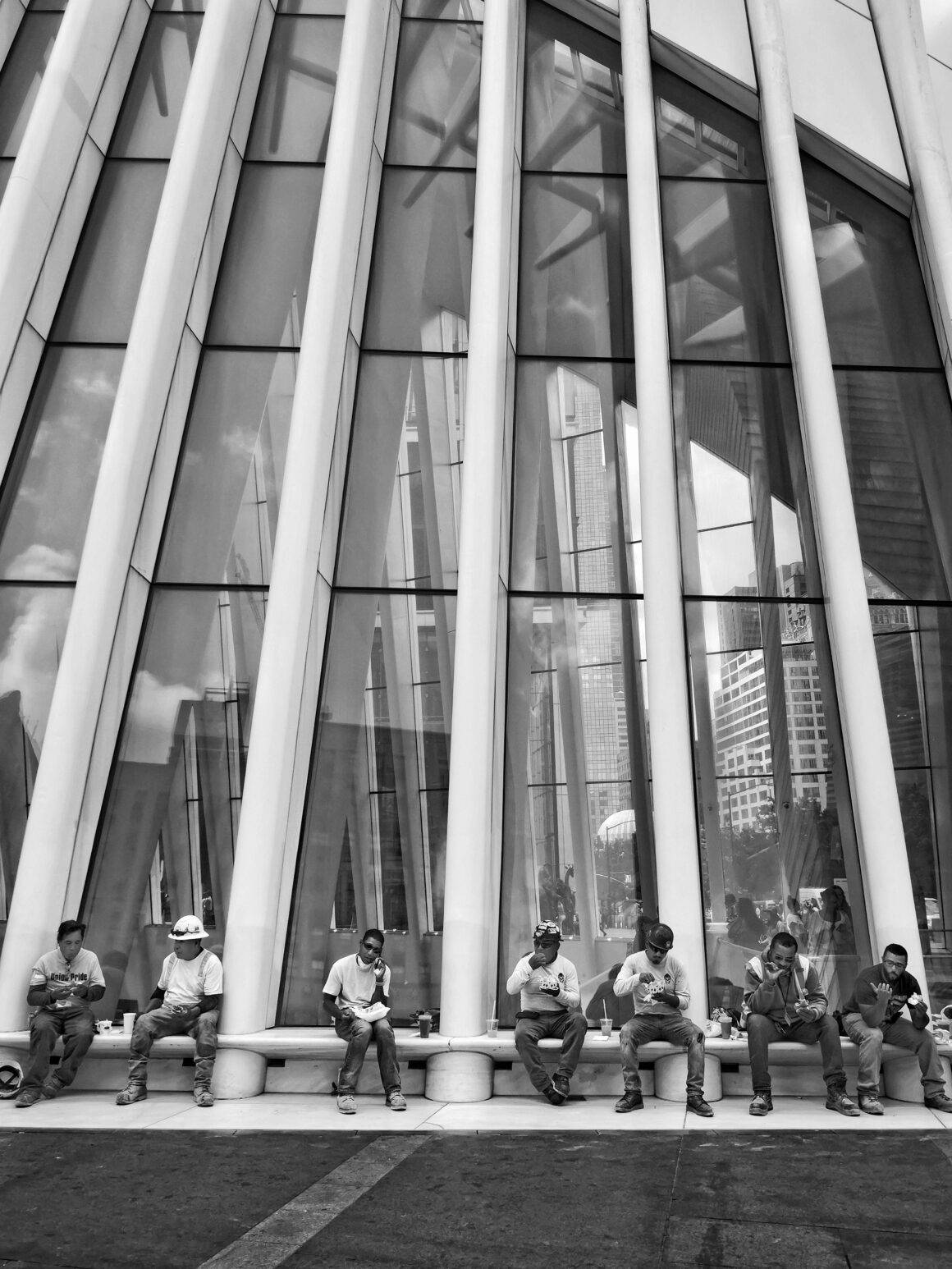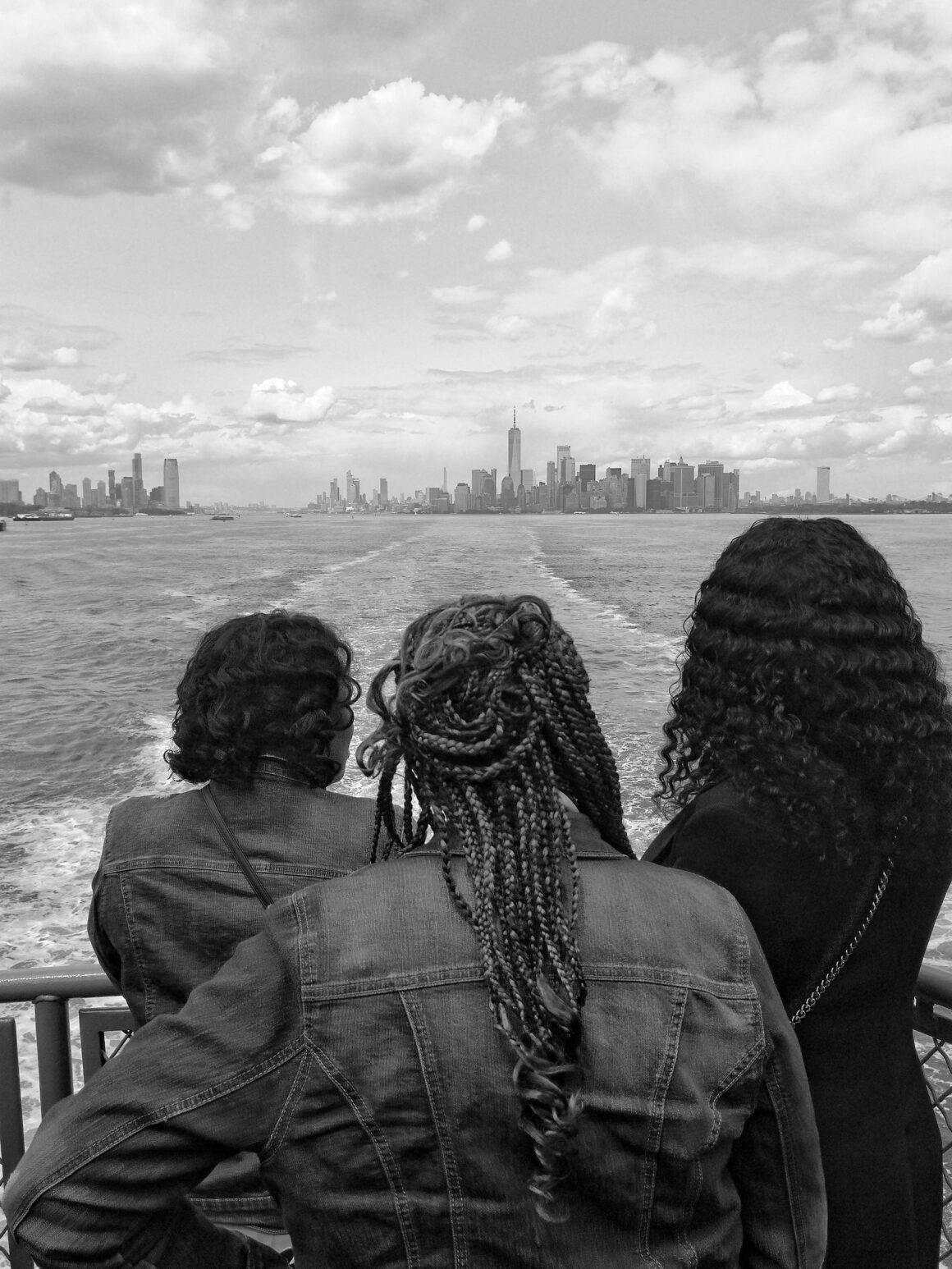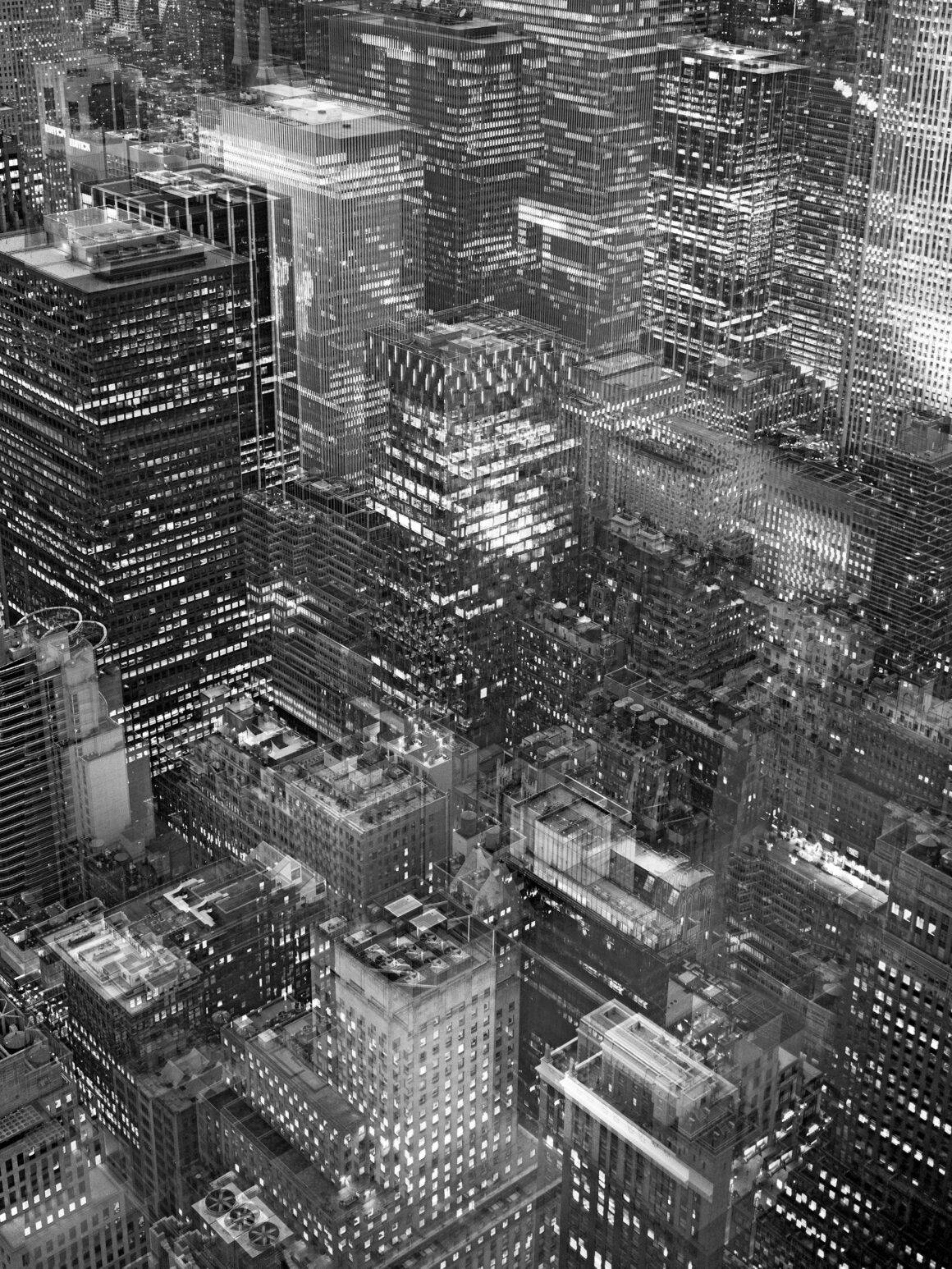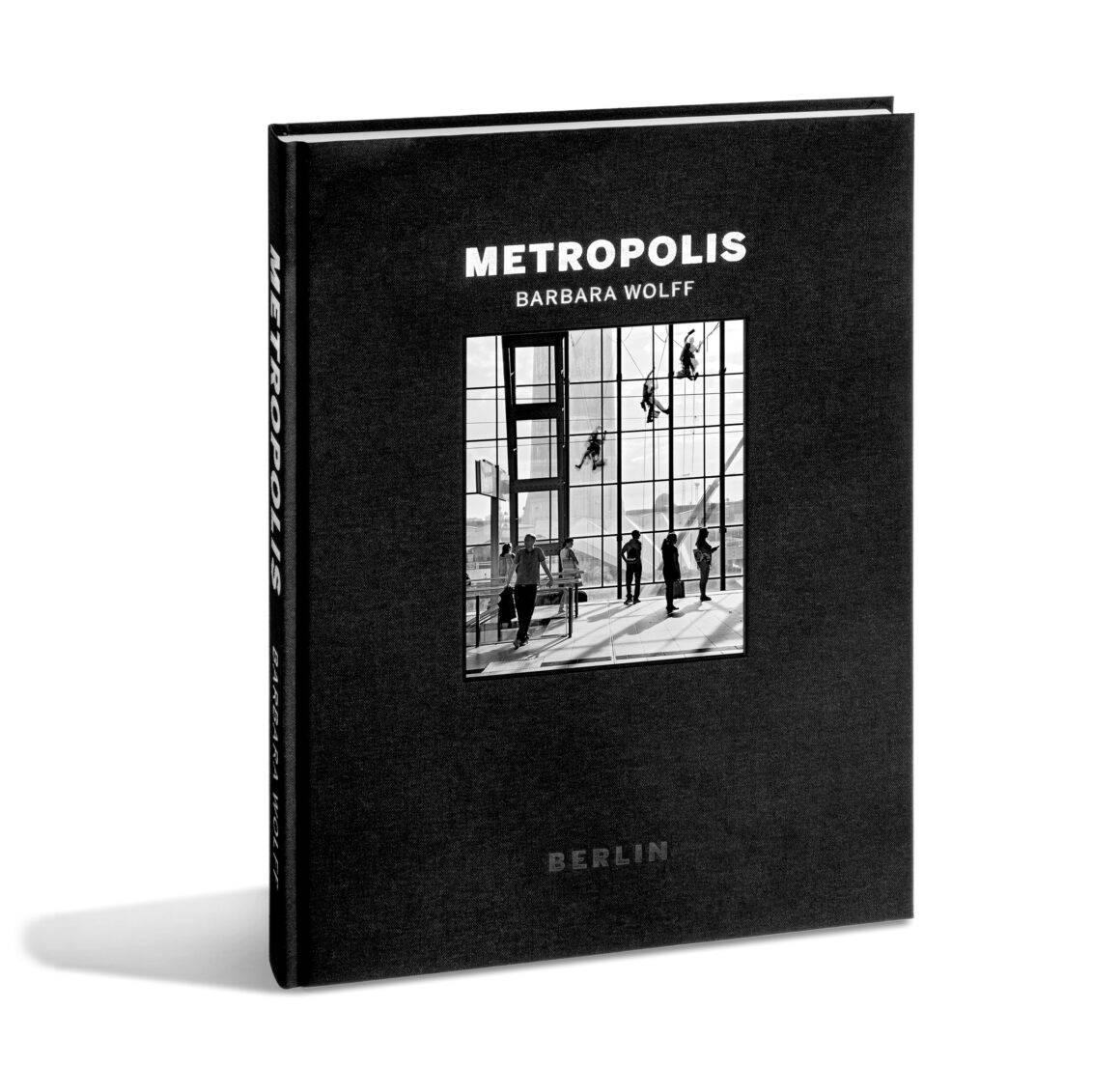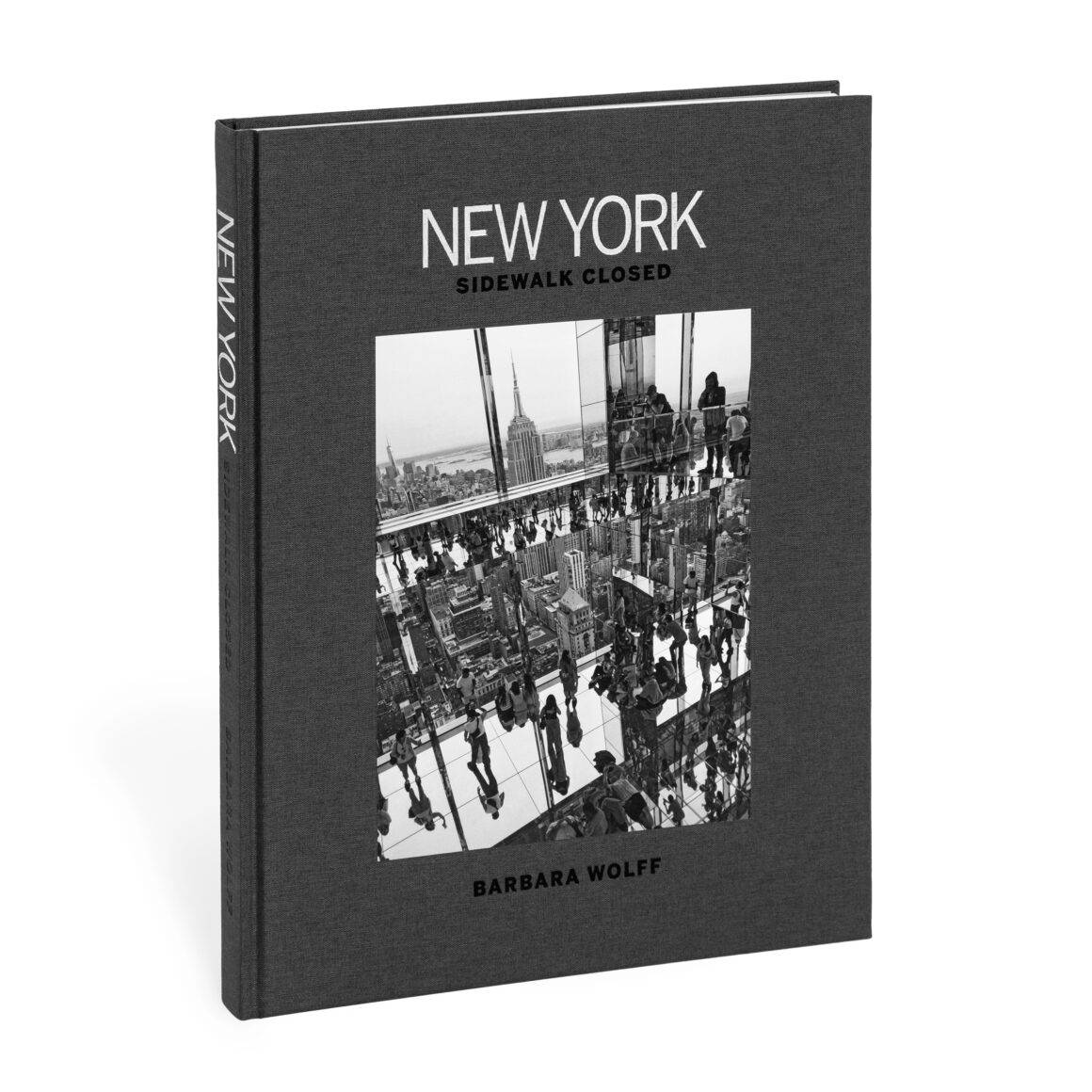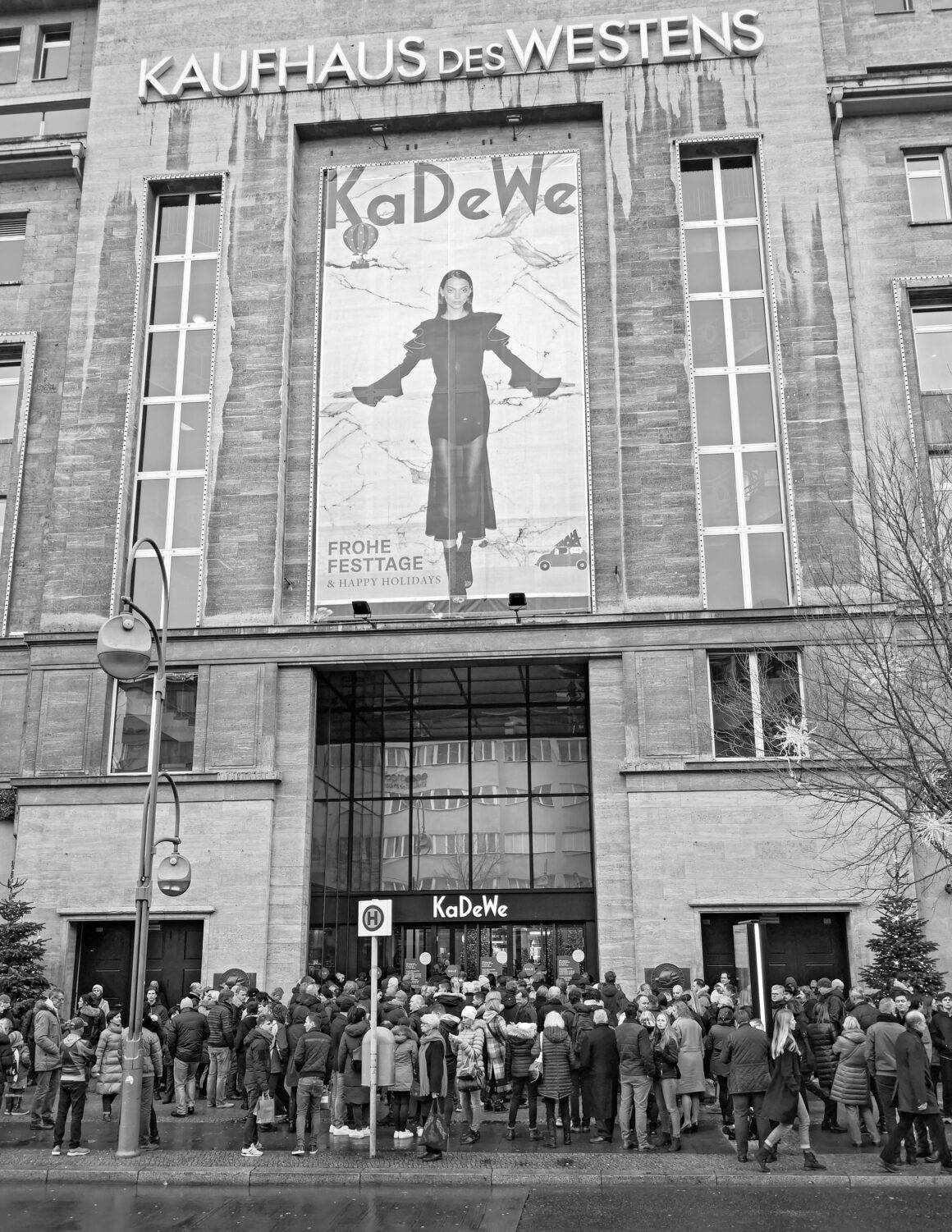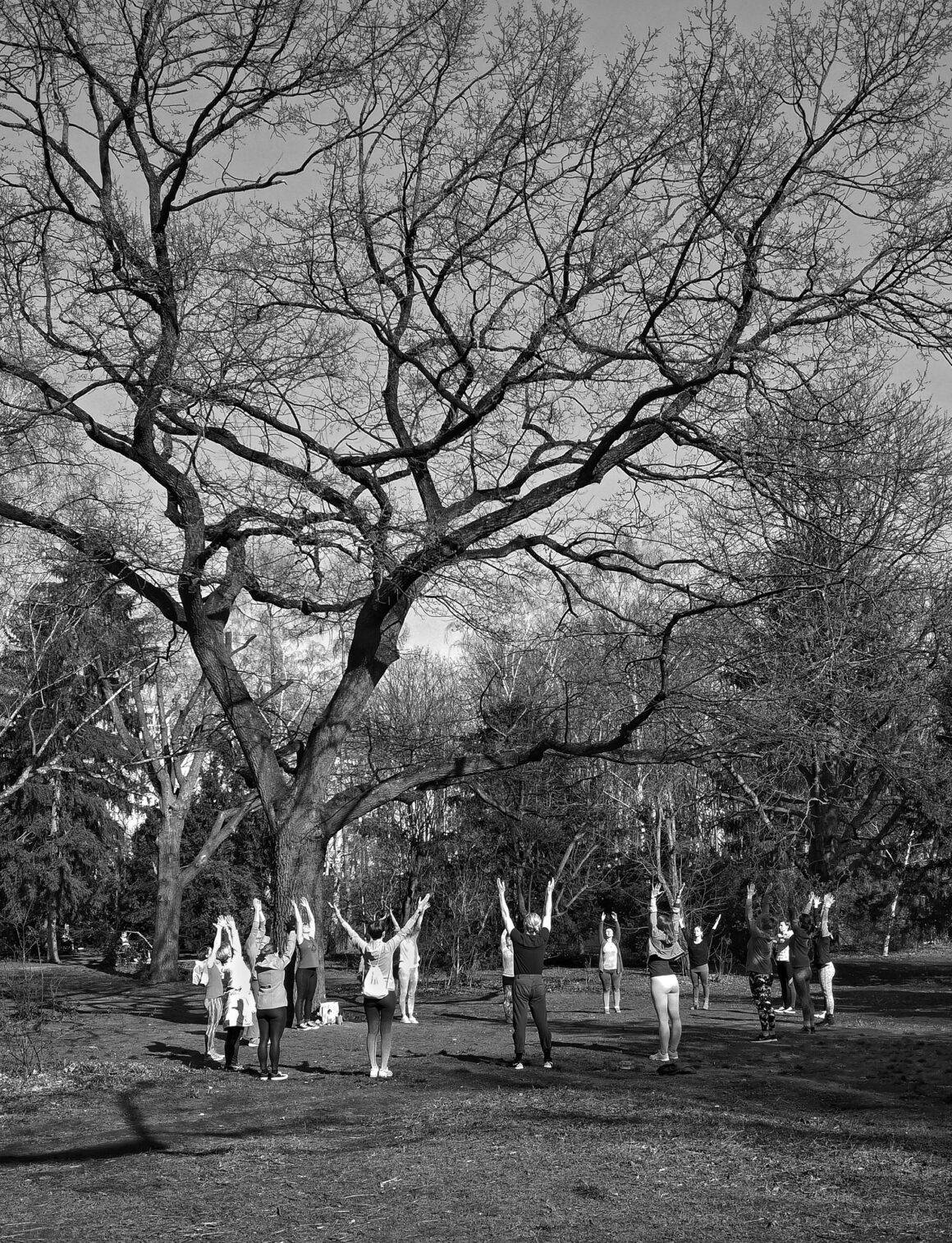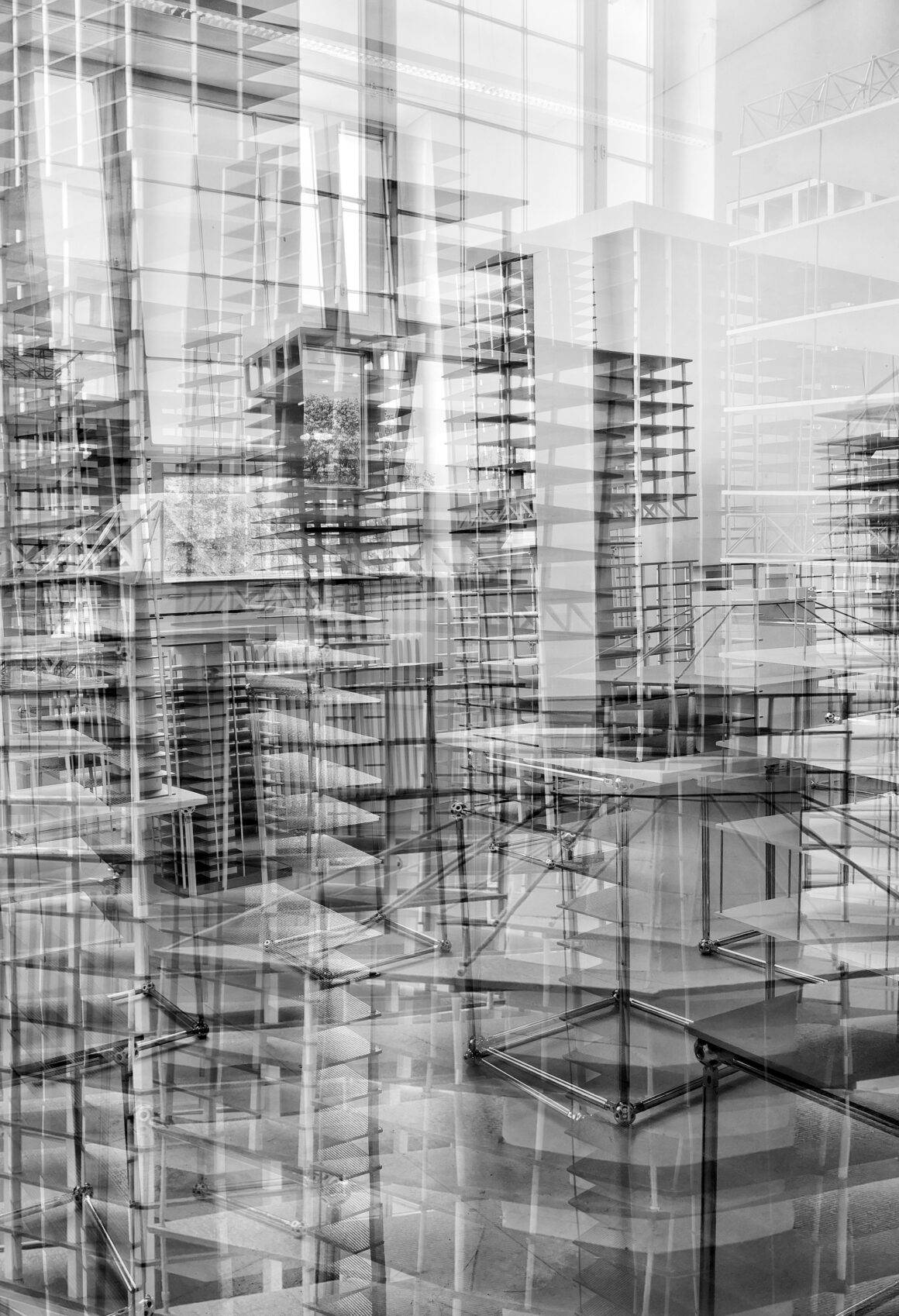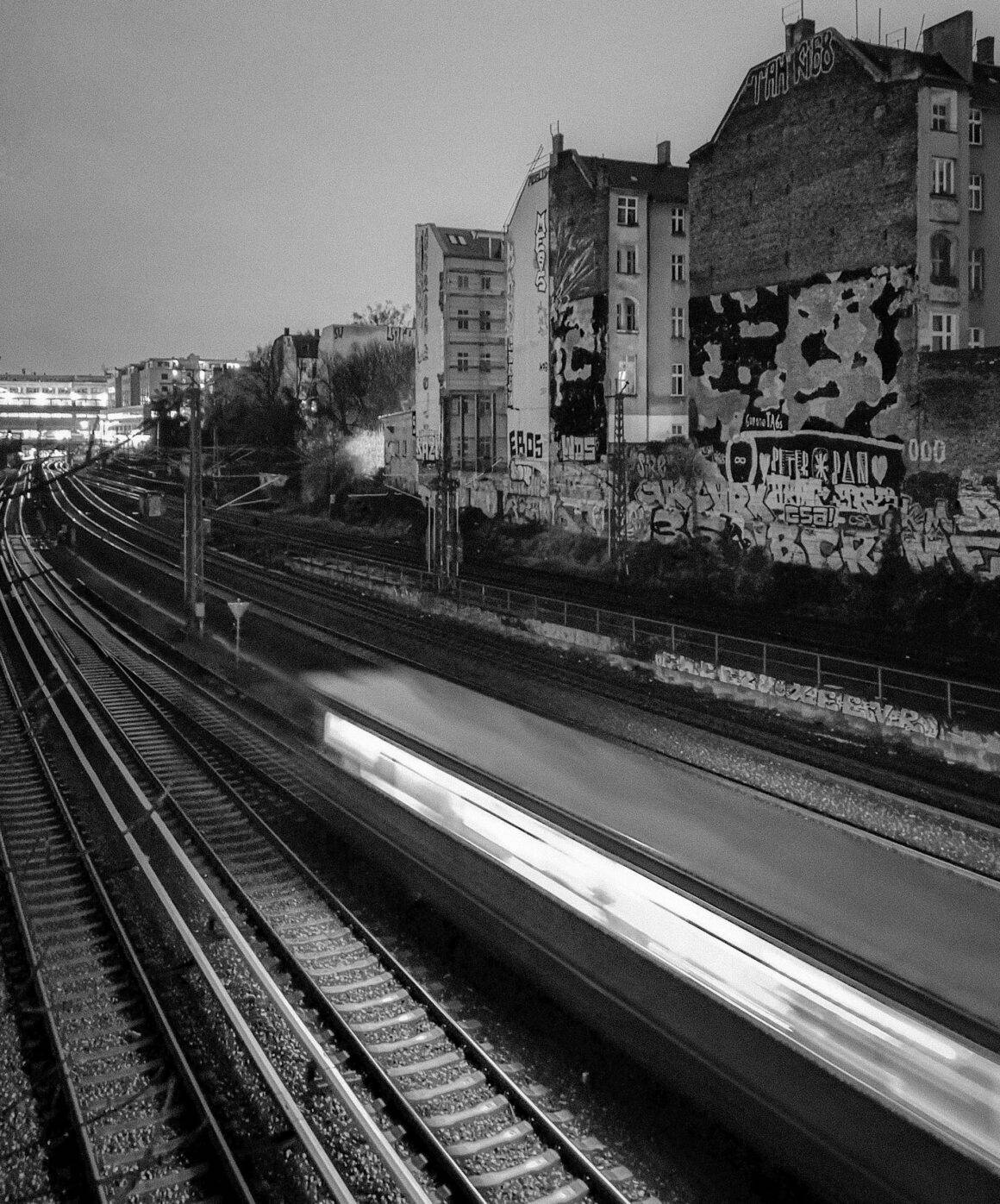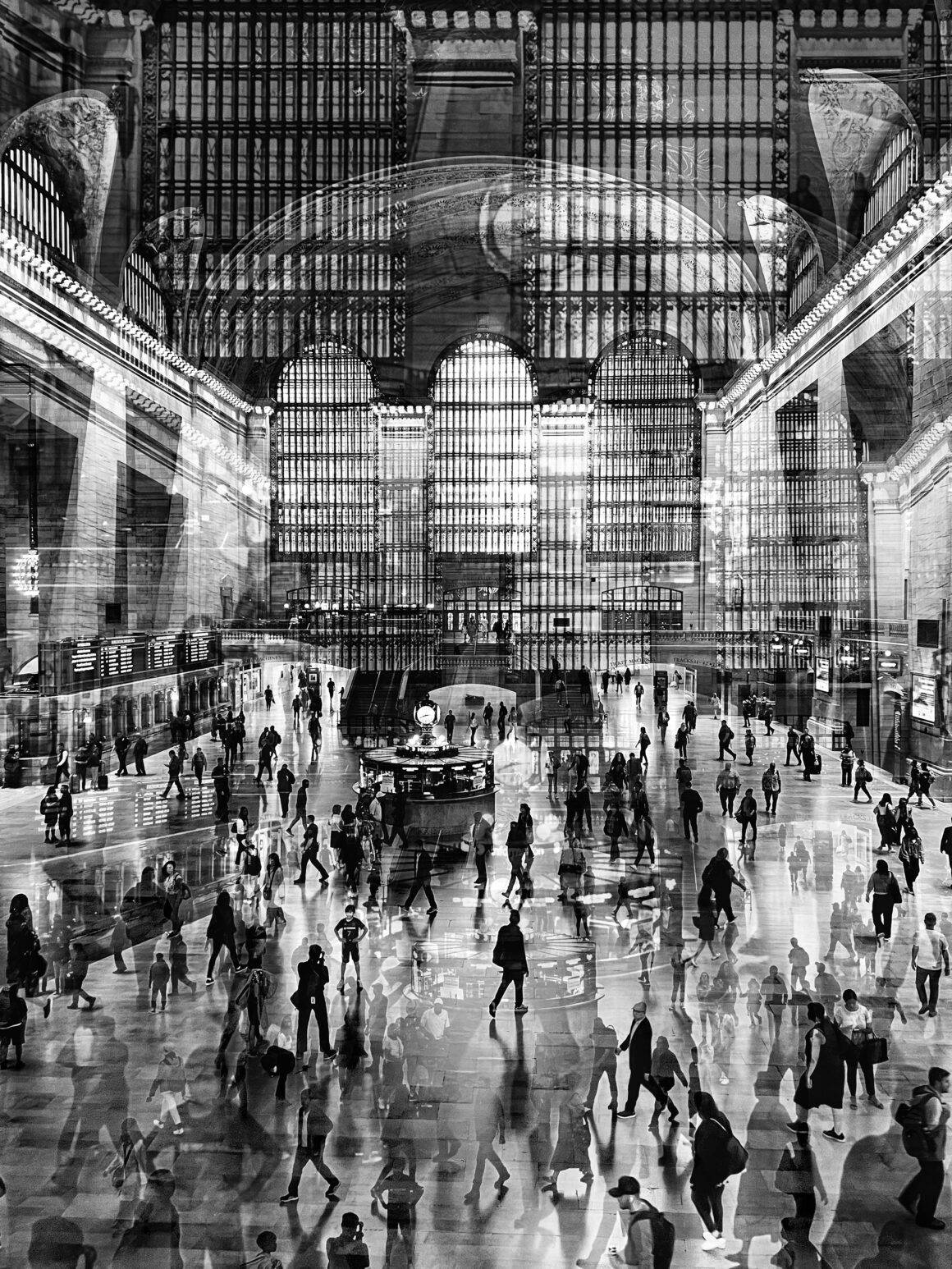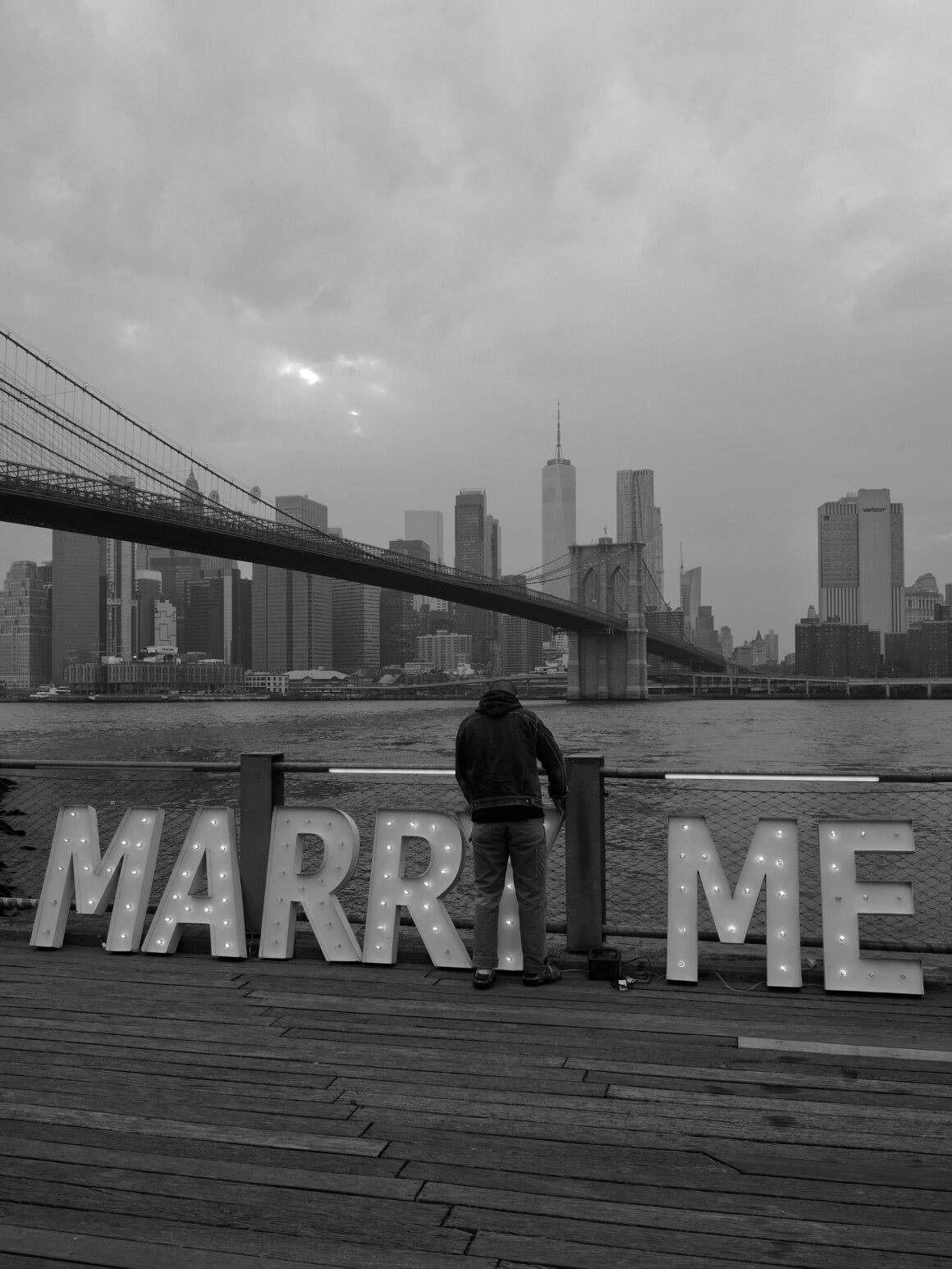Read The Game Magazine’s interview with Barbara Wolff, a renowned German photographer, covering her artistic journey, with a special focus on “METROPOLIS, BERLIN,” and “NEW YORK, SIDEWALK CLOSED.”
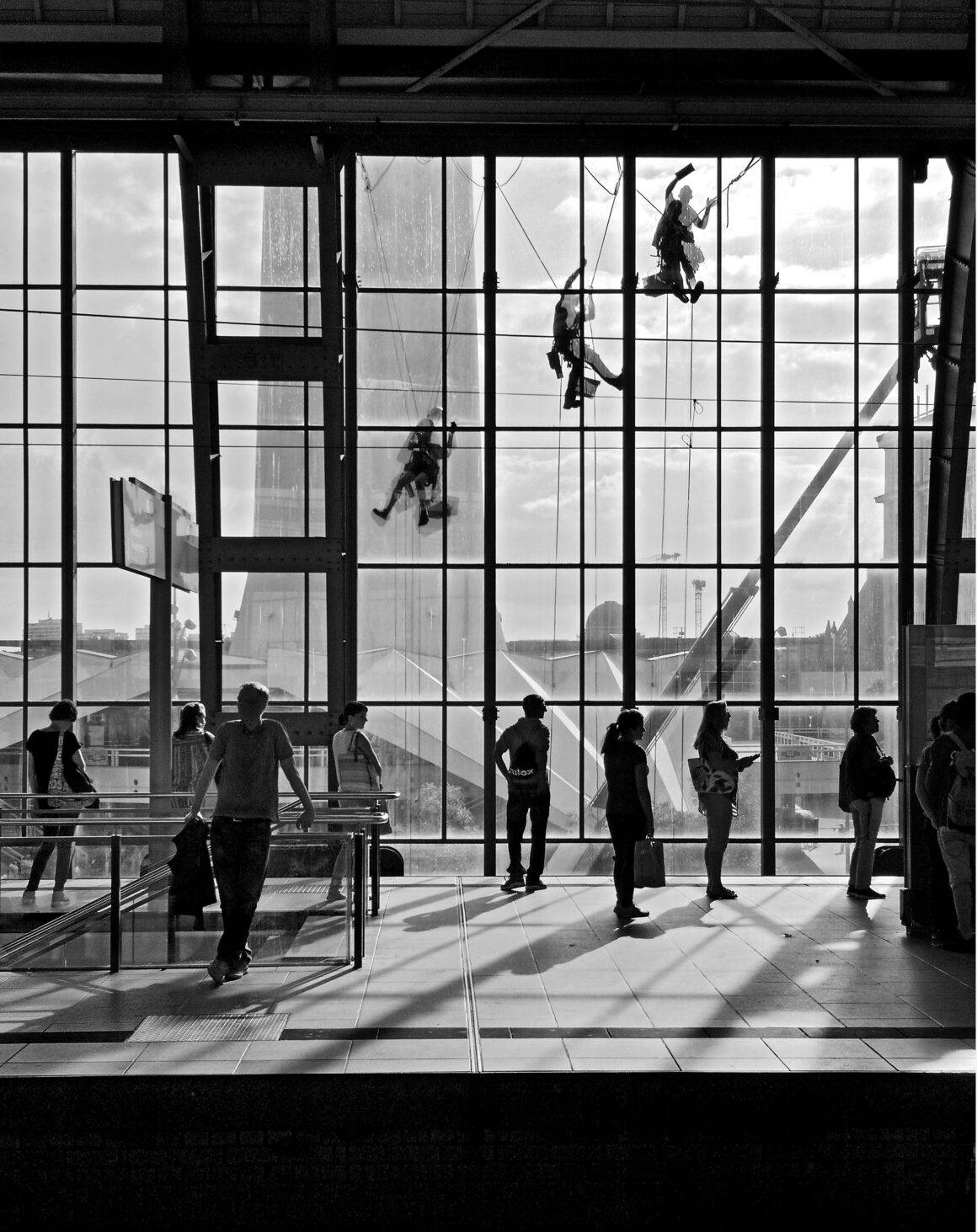
Tales of Two Cities, An Interview with Barbara Wolff

“The focus is not on the theoretical concept, but on intuition.” – Barbara Wolff in an interview with The Game Magazine’s writer Jens Pepper.
In our last conversation – available on YouTube – we spoke at length about your background, your development as a photographer, your freelance projects as well as your commissioned work and your work for camera manufacturer Linhof. Today, I want to talk to you about your last two books, METROPOLIS, BERLIN and NEW YORK, SIDEWALK CLOSED. I don’t think it’s easy to make books about cities that have been immortalized so often in publications. On the other hand, everyone has their own personal view of things, and I understand that you want to share yours with others. What motivated you to make these books?
My first book, METROPOLIS, BERLIN, was actually supposed to be an exhibition. But then the pandemic hit, and exhibitions were impossible for a while, so I thought: I’ll make a book then! It wasn’t planned beforehand. But through my daily Instagram posts, a lot of followers supported me – and I felt an interest in “my” Berlin pictures.
It was a little different with the New York book: followers also pushed my photo tours through New York by commenting on the posts. I felt encouraged by comments like “This looks like a book”. I also find it a challenge to take pictures of places that have already been the subject of other photographers’ work. And honestly – cities change every day, so the pictures will also be different, and of course, everyone has their own view.
So a book instead of an exhibition, which would not have been possible during the pandemic. But the photos were taken before the pandemic because the people you see in the pictures aren’t wearing masks, and the street scenes are lively. What time period is covered in the book?
The first photographs for METROPOLIS, BERLIN were taken in the fall of 2018. The book features images from 2018 to 2020. I started my forays through Berlin before the pandemic and added the last chapter during the pandemic. We finally printed it in the fall of 2020.
Are you a flâneur who wanders aimlessly through the city and finds things and events that are then captured photographically? Or are your wanderings planned in terms of motifs?
Flaneur sums it up quite well. Most of the time, I let myself drift. But on the other hand, I also like to deliberately seek out places where I hope to find the patterns of the city – architecture and people, little people in urban space.
Does “little” refer to the social position of the people or to their size in relation to the architecture?
To their size in relation to the architecture! Of course, the importance of people in their position in the urban environment also plays a role. It’s also the structures that captivate me – both graphically and in terms of content.
What kind of structures are these in Berlin?
If I may simply mention pictures: for example, the cover of the book, which shows window cleaners on the Alexanderplatz S-Bahn platform. They are stuck to the windows, with people waiting below. The picture is structured by the frame structure of the windows and by the shadows of the people. Or something more abstract: on page 35, an architectural model is “dancing,” etc.
OK, the window cleaners at Alexanderplatz are moving into a real existing space, which is understandable for viewers. The second picture you mentioned is one of the few examples in the book where you used optical aids or manipulation to achieve a certain effect, or have I misinterpreted that? It’s not a situation that is perceptible to the human eye that you’re showing us.
That’s right. But I wouldn’t call it an effect. It’s a double exposure or two or more images of the same subject superimposed on each other. I rarely do that, but it happens immediately during or immediately after the shot. It’s a very spontaneous decision. This principle can also be found in the New York book. I use it to reinforce my visual impression.
“There are stories of hope for those arriving, hope for freedom, a better life or career and the stories of their shattered dreams. What I found was the real Metropolis of my imagination.” – Barbara Wolff.
You took the Berlin pictures digitally with a smartphone.
Yes, I did. But it’s a special smartphone that has a black and white sensor and a good lens. The image files are 20 MB in size. This camera – yes, that’s what a smartphone is! – naturally allows you to work very spontaneously. And not to be underestimated is the large display on which you can really compose! I’ve long wondered why “real” cameras don’t offer us this. Unfortunately, my favorite smartphone has long since been discontinued.
Which smartphone is that?
I don’t really want to advertise the product. But it’s an earlier model from Huawei.
You don’t work with other smartphones?
For colorful pictures, documentation, videos and everything else, like social media, I use an iPhone. But it’s not really suitable for my pictorial photography.
I’ll stick with the smartphone topic. You have a number of cameras that you have worked with over the years and still do. Why did you want to do the Berlin project with this cell phone camera, of all things? Did you want to test it out, or did you want to make a statement along the lines of – look, no matter what kind of camera you use, you can take good pictures with all of them, or did you just want to stick with the same type of camera after the first photos were taken and then the exhibition idea came up?
The project has developed – through my Instagram posts. I took photos and posted; there were likes and more followers, and there were lots of interesting direct messages. Initially, I wanted to photograph the tracks, the tracks in the city and the S-Bahn and U-Bahn stations. And I used my smartphone to find locations.
When I was out and about with a larger camera, I quickly realized that I couldn’t do it that well anymore: The angle of view was different; I was missing the infinite depth of field that I love and the ability to react quickly. And, of course, the situation was different – the people weren’t the same, or not there at all, the light wasn’t as fascinating as I’d seen before, etc. Then I thought – why not, I’ll just carry on like this. It really wasn’t about making a statement. On the contrary, I never wanted to emphasize the technique so much. In the end, isn’t it the picture that counts – and not what it was made with? It was a process of searching for the subject and the form.
It’s interesting that you posted many of the photos on Instagram quite quickly and then immediately received positive reactions. Social media as a catalyst for publicizing a project. Which photos did viewers react to particularly strongly?
Most Instagram visitors reacted to the “orderly” black-and-white scenes. “Orderly” because I often try to depict people in their urban environment, i.e., in the midst of architecture, but without jarring lines – after all, I come from a large format with its designed aesthetics. And the black and white makes the subjects seem timeless. At least, that’s what was attested to me.
Is that what appeals to you most about black and white, that the pictures seem more timeless?
In any case, black and white is an abstraction and a reduction. But I also really like the timelessness of it. The pictures show the present, but as if seen through a filter, they come full circle to the past. It has something of an essence.
Are there any Berlin photographs by colleagues, living and deceased, that you particularly like?
The Berlin aerial photographs by Hein Gorny come to mind, they are painfully sad. The pictures were taken after the end of the Second World War. The buildings, some of which were badly destroyed, cast long shadows. A depressing scene.
Sadness, gloominess, none of those can be found in your Berlin pictures. Your pictures are more life-oriented, like the work of a woman who is completely at peace with herself and her hometown, or am I misinterpreting that?
What does “at peace with herself” mean? That’s not the point. I am fascinated by urban space and the diversity of urban life, and I also look at it critically. There are also pictures like the one of KaDeWe, the yoga circle, or the business people at Potsdamer Platz that make a statement in my own way.
You have divided METROPOLIS, BERLIN into chapters, which you title Change, Mystery, Humans, Tracks, Night, Illusion, Nature and 2020. Some titles are quite concretely realized, while others, like Change and Illusion, seem more abstract.
The structure of the Berlin book was very spontaneous: during the pre-selection process, I spread all the pictures out on the floor and sorted them into groups. The chapter headings emerged very quickly from this. I didn’t spend a long time constructing them. It’s a way of working that I stand for: the focus is not on the theoretical concept but on intuition. Of course, some corrections were then made with Marc Barbey’s support.
Your gallerist, who also organized the exhibition with the photographs in 2021. It’s interesting that you produced negatives from the digital images and then made the prints from them. Why did you do that?
I love the aesthetics of a Gelatine silver processed image: the soft intermediate tones, a rich black and preferably a silky matt surface. No digital printer can achieve this quality! I also find it exciting when the digital images ultimately become pictures on the wall thanks to the individual analog enlargement technique. A synthesis of the analog and digital worlds. However, it is very labor-intensive and time-consuming if, like me, you do everything on your own.
Let’s move on to SIDEWALK CLOSED, your recently published book about New York. Last summer, you spent a few weeks in the East American metropolis to take photographs. Did you know from the outset that this trip would lead to another city book?
Of course, I knew that I would be taking photographs. I do that all the time and everywhere. But I had no intention of making a book. There are many more books on New York than on Berlin. The most photographed metropolis! Besides, I didn’t want to put myself under pressure and taking planned photographs would have required a conceptual way of working. And that goes against intuition.
You explored the city as much as you could in a limited amount of time. You even changed your apartment several times during the four weeks so that you could experience different parts of the city intensively. What is different about walking in New York?
Of course, a foreign city is different from your hometown – it offers a different scenery on every corner and has something to discover for the foreigner 24 hours a day, so to speak: There are the people in their diversity, their often arduous daily life and survival as well as their efforts to find individuality in the chaos of the city. And, of course, the architecture with its incredible heights that seem to ignore all human scale. There are stories of hope for those arriving, hope for freedom, a better life or career and the stories of their shattered dreams. What I found was the real Metropolis of my imagination. In that sense, I was in my theme! But it also brings to mind the many images of New York that each of us has stored up. Do I accept them, or do I suppress them? And at the end of the day, I’m a tourist, I don’t want to deny that.
Hence the shots of the Brooklyn Bridge, Grand Central Station – here again as a multiple exposure – the view of the southern tip of Manhattan from a ferry, then Coney Island and so on. There is one shot where countless people are lying on sleeping mats on the pavement; on Times Square, I assume. What kind of Situation was that? A demonstration or a public workout?
That was yoga on Times Square – what a crazy scene! In the midst of all the huge advertising hoardings, in the middle of the tourist hotspot, people (mostly New Yorkers themselves) roll out their yoga mats and practice deep relaxation. That was on the summer solstice. Typical of New York today, in the post-pandemic era.
Speaking of the pandemic, at the time you were in New York, weren’t there the devastating forest fires in Canada that darkened the sky over the city with orange smog? The event was not reflected in your book.
Yes, of course. OK, my book is in black and white. But the picture “MARRY ME” was taken the day after smog was worst. Actually, I should have stayed in the hotel room – my American colleague had strongly advised me to do so. But it drove me out, wearing a mask. And in Brooklyn, I found this scene: against the backdrop of a skyline still shrouded in smog, the staff were preparing for a marriage proposal ceremony. The show must go on. Later, another photographer I met up with in New York pointed out my photo of a billboard with the inscription “WELCOME TO HELL – NEW YORK – 6.6.23”, which I had posted earlier.
In the New York book, there are more photographs in which people were photographed in a recognizable way, including homeless and destitute people. A direct comparison of the books reveals this. It is generally easier to photograph people on the street in the USA than in Europe. Was that something that immediately interested you, this photographic freedom, or did you have to overcome yourself?
I don’t hold my camera very close to anyone’s face though; that’s strange to me. I also try not to offend and to respect dignity, even if the person being photographed is recognizable. But you really can’t ask beforehand!
When I was out and about with New York photographers, for example, they dismissed the problem out of hand under the motto: anything that takes place in public space can also be photographed. I don’t know if that’s really true for the United States. But it has made me a little more relaxed.
I consider the narrowly interpreted “right to one’s own image,” as we practice it in Germany, to be a shackle for all photographers who deal with real life – outside of the image staging practiced everywhere. Preferably, the head or face is covered – there are thousands of these pictures in high schools and galleries. But we all stand in awe of Vivian Maier or Henri Cartier-Bresson, to name just two examples. These pictures could never have been created that way.
However, in Germany, freedom of art does allow exceptions. Take a look at the photos by Miron Zownir and Holger Biermann, both recognized street photographers who also exhibit and publish. As far as I know, there have been no legal problems so far. The ruling of the Federal Constitutional Court in 2018 has created some legal certainty.
You worked with different cameras in New York, so not just with a smartphone.
That’s right, I was well equipped. I had one of the three cameras and both smartphones with me every day. And in the evening I roughly sorted out the pictures – I uploaded the ones I found most interesting to Dropbox, regardless of which device supplied the pictures. So I had already made a preselection. A good way of working for me, which also creates order in my head and not just on the storage media.
“I don’t hold my camera very close to anyone’s face though; that’s strange to me. I also try not to offend and to respect dignity, even if the person being photographed is recognizable. But you really can’t ask beforehand!.” – Barbara Wolff.
Since I asked about the camera earlier, please be so kind as to tell me what you worked with in New York.
I had a Sony with a zoom, a Fujifilm with an extremely wide angle and a Ricoh with a normal lens, all with the same sensor size. As you can see, I was undecided and wanted to test the cameras for my needs. It was an experiment. Not really typical for me.
How did the book evolve from the photos you uploaded to Dropbox? You did it again with Lunik Verlag from Berlin.
Lunik Verlag signaled, “This looks like a book”, and would be involved. After all, a book project has to be financed and published. And then, I immediately asked one of my followers, who had commented intensively on the New York Instagram post with interest and local knowledge, if he would like to write a text. It was Daniel Blochwitz, who himself lived in New York for a long time and now lives in Switzerland as a photo curator and author. And Daniel was immediately on board! In addition to the text, he also provided important thoughts on the structure of the book. For example, we mostly took the chapter headings from the motifs. And yes, the title also often appears in the pictures: NEW YORK, SIDEWALK CLOSED. But I’m not just concerned with the ubiquitous building sites, demonstrations and yoga events, but also with public space in general and its significance for a city with limited space like New York.
Finally: Which other city would tempt you to dedicate a photo book to it?
Paris!

